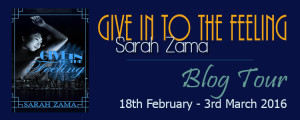No, I'm not talking today about the 1946 film directed by Frank Capra. I'm talking about life. About why life is worth living. Which, by the way, is the theme of the movie. We are going to spend a little bit of time today chatting about philosophy. I know, I know. Philosophy. Boring. Bear with me and see how eminently practical philosophy is.
We all have one, you know. A philosophy, that is. We may not be able to articulate its tenets, but how we live our lives tells others what those tenets are. Even if they can't enumerate specifics either, they know exactly what drives us and what we value.
What we value and what motivates us is in fact our personal philosophy. And if we can't utter it with our lips, we certainly do so by our actions.
I've been interested in philosophy for nearly 50 years, ever since high school, and the one philosopher I continually come back to is the ancient Roman Stoic, Lucius Annaeus Seneca, known as Seneca the Younger.
Seneca was a fascinating individual in his own right. A man often at odds with his own school of thought. A man who was eminently guilty of not following his own advice.
However, where Seneca, in my opinion, redeemed himself was in his old age. There, in his last years, stripped of power, position, and wealth, Seneca embraced his philosophy and wrote the best advice one person could ever hope to give to another. His Letters to Lucilius are short and pithy and cover a wide range of topics. They are very readable and enjoyable today — almost 2000 years after they were written.
What in particular do I like about Seneca? I'd have to say it is his very practical and realistic approach to life. His advice is reasonable and not freighted with pietistic or moralistic sentiment. It is pre-Christian and fits well with those of us living in a post-Christian age. Ironically enough, early Christian morality and ethics were based on Stoic principles.
As an example, let's take a look at Seneca's opinion about wealth. According to our philosopher, there is nothing wrong with having money. Even lots of money. The problem comes, according to Seneca, when we try to cling to our money. The solution, he offers, is to live as if we didn't have any money. In other words, to live a simple life. By so doing our lives won’t be cluttered with the problems one encounters when one has lots of money.
Seneca himself learned this lesson the hard way. At the highpoint of his career he was one of two tutors to the very young Nero. He had tremendous power and was one of the wealthiest men history has ever known. Bill Gates’ wealth would have been casual spending money to Seneca. When Nero became of age and Seneca realized what the Emperor was truly like, our philosopher gave his money to the young man and retired from public life. Seneca went from being in control of the vast Roman Empire to being a humble patrician farmer.
From Seneca, I learned to value life for its own sake. Not for what I have, because tomorrow everything I have might be taken away from me — as it was for Seneca. The small things and the intangible things give value to life. Things like friendship and contentment. And those are found within a person, not without.
No one has friends who is not first a friend to himself or herself. I cannot love another, unless I first love me. I must, first and foremost, love myself and be friends with myself. Only then, am I capable of truly loving and befriending others.
Contentment does not come from without. It comes from within. If I am satisfied with who I am, then I will be satisfied with what I have. And I will be content.
The human being is a reasoning animal, Seneca wrote. And when reason has been brought to perfection in the soul, we fulfill the good for which nature designed us. We live then according to our nature, as reasonable beings. If we are out of control, if we lack contentment, is we lack love for ourselves, then we are imperfect beings and do not live reasonable lives. We are not living, Seneca would say, according to nature.
The goal of philosophy is to bring us to a state of mind where we live according to that for which we were designed. That is, lives marked by reasonable thoughts and behaviors.
This is a wonderful life if we live according to our nature, according to reason. If we are balanced and content, everything within us and around us will be wonderful.
That is philosophy. And why I find it such a wonderful, non-judgmental guide to life. The good life. The wonderful life.

